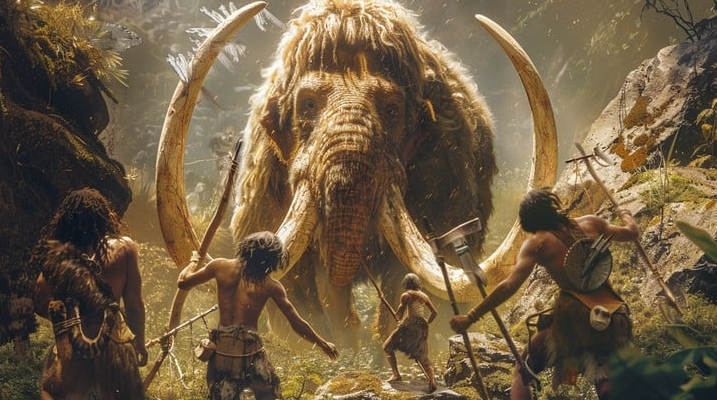Homo sapiens, the Wise Man?
(Published in the newspaper Amigoe on the 29th of January 2025)
The spread of modern man around the world
The modern human race is called Homo sapiens, which means “wise man.” But are we really that wise? We’ll get to that later. Another branch of humans evolved into the Neanderthals. The Neanderthals lived around 400,000 years ago and were found in Europe and parts of Asia.
Modern humans and Neanderthals were both hunters. They also gathered fruits and roots to eat. Modern humans left Africa and traveled to Europe and Asia about 60,000 to 50,000 years ago, and eventually to America. This happened in different waves. The Neanderthals lived in Europe and Asia. Neanderthals were a bit smaller than modern humans, but they were more muscular. They survived two or more ice ages. Their bodies were adapted to a cold climate.
Extinction of the Neanderthals
Neanderthals went extinct around 40,000 years ago, which is about 10 to 20 thousand years after modern humans arrived. It’s pretty much a given that we met up. Turns out, we share between 1% and 6% of our genes with Neanderthals. Scientists used to think diseases brought by modern humans or competition between us were the reasons for their demise. From around 40,000 years ago, Europe and Asia were only inhabited by modern humans.
Did you know that recent DNA research suggests a different story? So, because of the rapid climate changes and super cold periods, both modern humans and Neanderthals went extinct in Europe. But here’s the catch: an earlier group of modern humans had already left Europe and traveled to other parts of the world. And guess what? They mixed with the Neanderthals, so they had Neanderthal genes that protected modern humans from certain diseases. Later, this wave of modern humans went back to Europe and filled it up again.
The cycle of ice ages
Back then, Europe was covered in ice. Ice ages happen all the time, lasting around 90,000 to 100,000 years. After an ice age, there’s a shorter, warmer period of about 10,000 to 20,000 years. Guess what? We’re currently in one of those warmer periods right now, between two ice ages!
This cycle of ice ages, interspersed with warmer periods, is caused by the orbit of the Earth, which is sometimes slightly more, and sometimes a little less elliptical, and by the changing position of the Earth's axis. If the earth's orbit stretches slightly, the earth gets less sun and it gets colder. The slope of the Earth's axis is currently 23.5 degrees but fluctuates between 22 degrees and 24 degrees. As the slope of the Earth's axis decreases, the higher latitudes get less sun and it gets colder there.
The last ice age was called the Vistula and lasted about 100,000 years. During this time, Europe was home to some incredible creatures called Megafauna. These were massive mammals like mammoths, woolly rhinos, cave lions, and cave bears. They were way bigger than the animals we see today!

Hunt for the mammoth
Extinction of megafauna
Around 10,000 to 12,000 years ago, the Vistula ice age ended, and a warm period started. During this transition, many changes happened. In Europe and Asia, the population grew. At the same time, many big animals went extinct. This was also when humans started farming for the first time, which is called the Neolithic Revolution. It’s not clear if these things happened together, but it’s possible that the extinction of the megafauna was because people were hunting them more and more as the population grew.
In this article, we’ve explored the demise of the Neanderthals and how modern humans spread across the globe. We also saw how megafauna vanished and agriculture emerged. In the next article, we’ll delve into how agriculture progressed and how the Industrial Revolution took off in England around 1750. This marked the start of the climate change period we’re currently facing.
4. Homo Sapiens, the Wise Man?